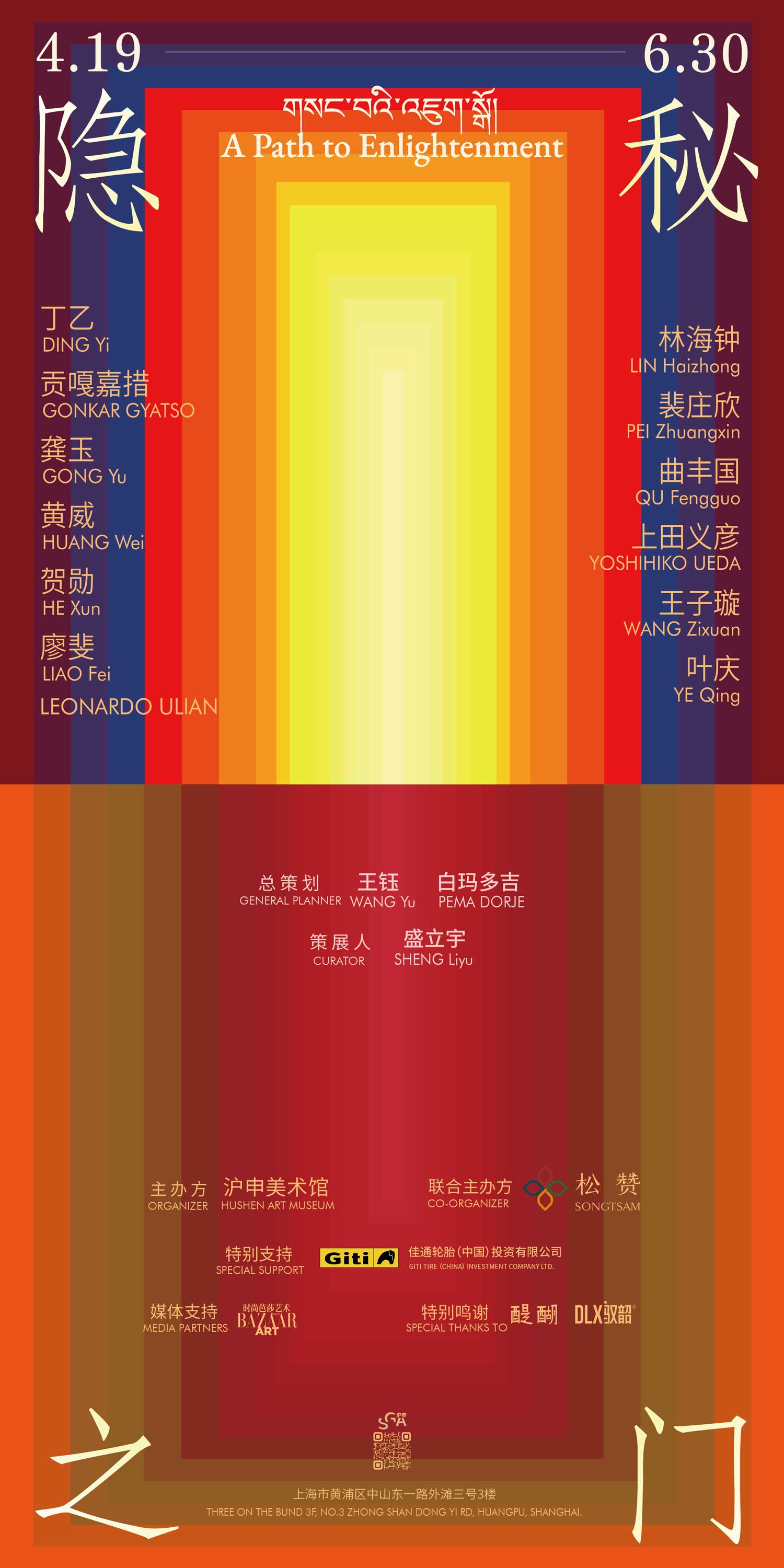This April, Hushen Art Museum is pleased to announce its exhibition titled "A Path to Enlightenment". This exhibition brings together thirteen contemporary artists Ding Yi, Gonkar Gyatso, Gong Yu, Huang Wei, He Xun, Liao Fei, Leonardo Ulian, Lin Haizhong, Pei Zhuangxin, Qu Fengguo, Yoshihiko Ueda, Wang Zixuan, Ye Qing, brought into dialogue with iconic works from the collection of the Songtsam Museum.
An area of the Hushen Art Museum’s exhibition hall will feature rarely seen artifacts, such as the Buddhist hall relocated from the Songtsam Museum, 13th–14th century Ali Buddha statues, a giant thangka of a hundred Vajrasattva figures, murals from Gongga Chöde Monastery, and vitrolite paintings with iconic Tibetan imagery. Through the dialogue between Tibet and modern society, the exhibition explores alternative visions of modernity and questions how Tibetan civilization might be meaningfully presented on the Bund, a symbolic origin point of Chinese modernity. The exhibition will be on view from April 19 to June 30, 2025.
Phenomenologists argue that our understanding of the world is constructed through consciousness. Human perception operates within the immediate coordinates of time and space, yet the physical objects we perceive—the “five aggregates” in Buddhist terms—function more like app icons on a smartphone: tools designed to optimize user experience (i.e., consciousness), rather than to reveal the underlying code of reality itself (Hoffman, 2000). Time and space may not be objective entities independent of awareness, but rather frameworks through which we interpret the world—far from ultimate truth, or what Kant called the “thing-in-itself”.
Wise thinkers throughout Tibetan history would likely find this notion familiar and agreeable. Modern physics, too, has provided experimental evidence from the quantum level that consciousness affects the physical world. The quantum version of the double-slit experiment, for instance, probes the very core of epistemology: when observation intervenes, the collapse of the wave function is no longer merely a physical event, but one that dissolves the boundary between subject and object. This aligns strikingly with the Yogācāra view that “all phenomena arise from consciousness”. Observing an electron alters its behavior—observation itself becomes an act of creating reality. This idea resonates profoundly with the doctrine that “perception transforms the perceived.” Likewise, at an altitude of 4,000 meters, Tibetan devotees begin each day dedicating merit to all sentient beings, trusting that such mental acts have tangible effects on the material world.
In this light, one could say that artists perform a similar function. Within the interface we inhabit, they generate symbols, illusions, and forms to help us engage more deeply with truth. In Tibetan terms, this is cultivating truth through illusion. The necessity of this lies in the use of the perceptible to awaken that which cannot be seen.
Why, then, would Songtsam—the leading cultural and hospitality brand of the Tibetan plateau—collaborate with Hushen, a landmark of Chinese contemporary art in Shanghai, to host an art exhibition? It is because the wisdom of the highlands is evolving with the times. The image of the Buddha, once preserved in palm-leaf manuscripts and temple murals, now appears on digital screens and in data streams. Can it still hear your prayers? As the saying goes, there are “84,000 Dharma doors”—while the media may change, for those committed to seeking truth, the tools are not the path itself.
Songtsam is not primarily concerned with whether visitors have an unforgettable travel experience. Rather, its deeper intention lies in exploring and communicating the age-old Himalayan worldview: What is the relationship between human beings and nature? Can these ideas be conveyed through travel—or through art?
As viewers exit the exhibition, the chimes of the Bund’s clock tower will still strike with mechanical precision. Yet perhaps someone will begin to sense a hidden resonance within those pendulums—one that echoes the vibration of a monastery drum in Tibet. Perhaps the“secret doorway”need not lie in remote mountains, but can open even within the heart of the everyday world.

